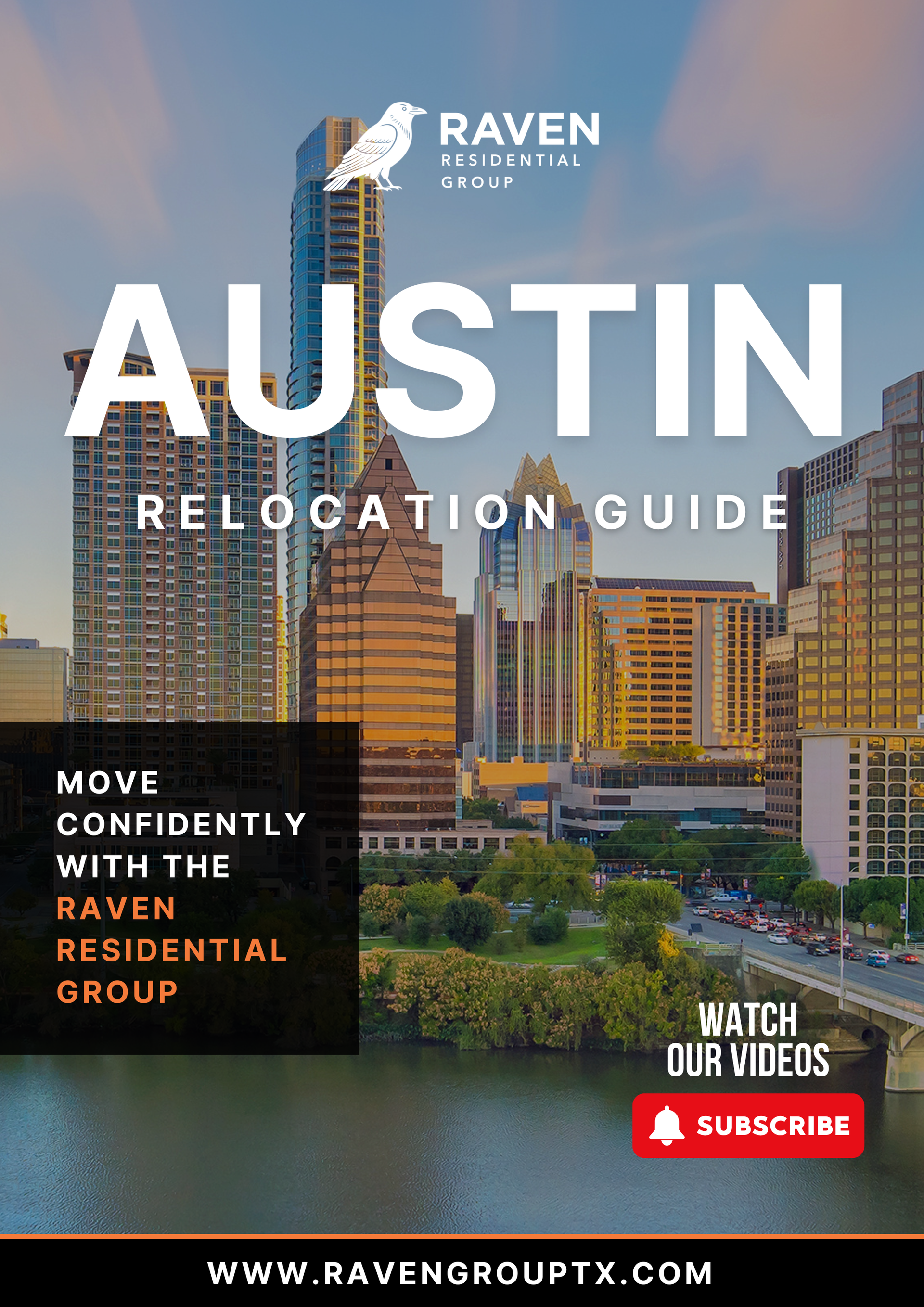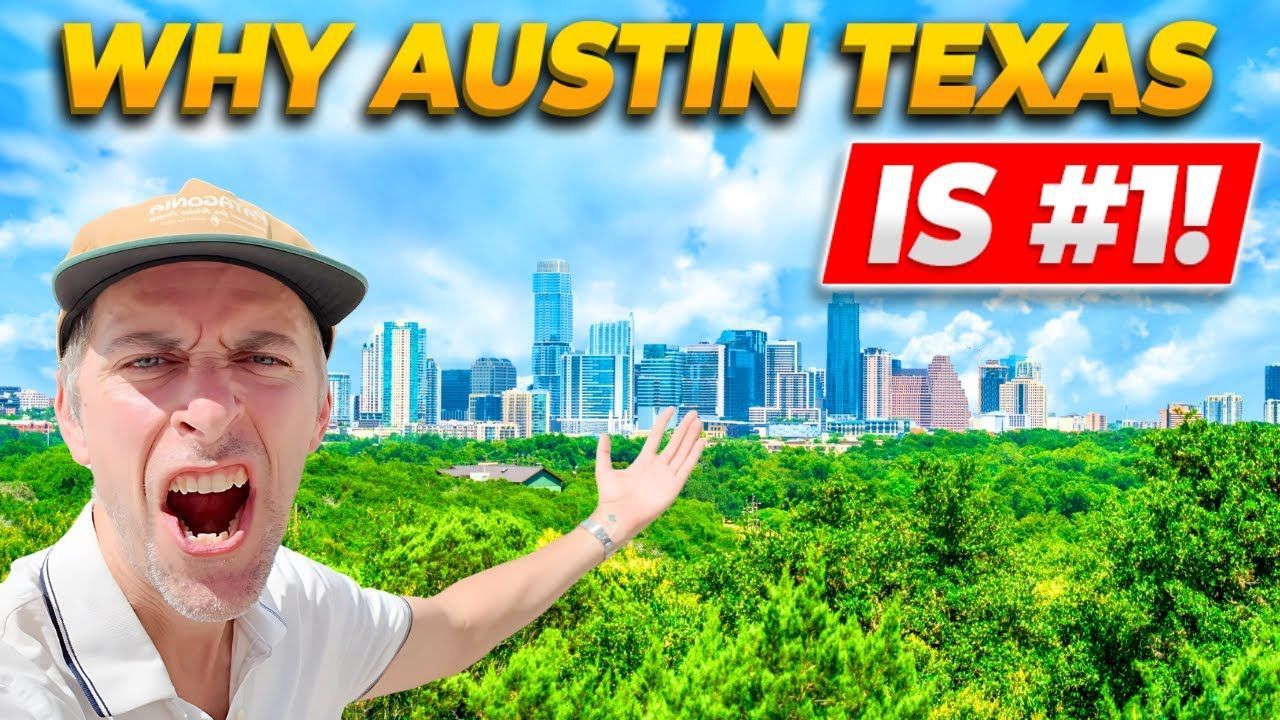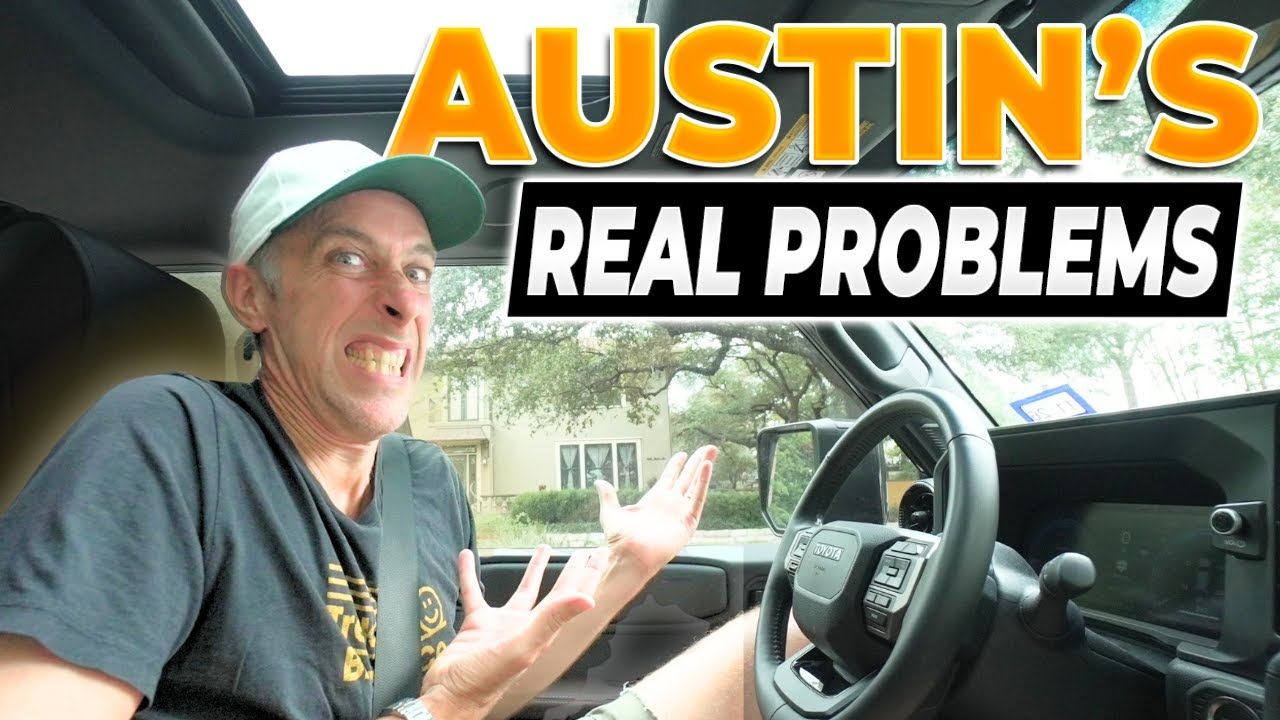Top 5 SECRET Austin Texas Neighborhoods You’ve Never Heard Of!
Table of Contents
- Introduction
- Eubank Acres: North-Northeast Austin’s Little Time Capsule
- Northwest Hills: Established, Hilly, and Aspirational
- Aldridge Place: Quiet, Historic, and Walkable Near UT
- Burleson Heights: A Quirky Pocket with a Gritty, Classic Austin Feel
- Western Trails: My Family’s Neighborhood and Pure South Austin Nostalgia
- How to Choose Between These Austin Neighborhoods
- Practical Tips for House Hunting in These Austin Neighborhoods
- FAQs About These Top Austin Neighborhoods
- Final Thoughts
Introduction
If you are thinking about moving to Austin, Texas, you probably already know about Zilker, Hyde Park, West Lake, and Tarrytown. Those neighborhoods get a lot of attention — for good reason. But there is a whole other layer of Austin that most relocation guides and listicles never cover: small, character-filled pockets that locals quietly adore. These places have personality, history, big yards, shady trees, and vibes that make you feel instantly at home.
I’ve helped people and families buy and sell homes across the greater Austin area for years, and every time I find myself recommending one of these lesser-known neighborhoods, people light up. Some of these areas are nostalgic and historic. Some are surprising: gems tucked away inside parts of the city people often overlook. A couple of them even have deep, personal meaning to me.
Below you’ll find a breakdown of the five neighborhoods I keep returning to. For each area I cover where it is, what the homes are like, price expectations, pros and cons, and why locals are so quietly protective of these pockets. If you want help weighing resale versus new construction, or if you want me to keep an eye out for off-market opportunities in any of these neighborhoods, reach out — I love this stuff.
Eubank Acres: North-Northeast Austin’s Little Time Capsule
Eubank Acres sits north-northeast of downtown, tucked between I-35 and Lamar Boulevard, just south of Walnut Creek Metropolitan Park and north of Breaker Lane. If you are driving the I-35 feeder road you might think the neighborhood does not exist — then you turn a corner and you are transported into a different Austin: tree-lined streets, low-slung ranch houses, yards that feel generous for being this close to downtown.
Most homes in Eubank Acres were built between the early 1950s and mid 1970s. That era yields a particular charm: simple, horizontal rooflines, big front yards, and lots of character in the details. For buyers who want a central-city feel without the cookie-cutter tract subdivisions, Eubank Acres feels like South Austin deposited into North Austin. There’s yard art, mature oaks, and a relaxed, lived-in energy that you rarely find this close in.
Price Points
If you are budgeting, know that at the very low end you may be able to find a smaller fixer-upper in the $450,000 to $475,000 range. Those homes often need significant work. On the high end, updated homes in this pocket can run between $650,000 and $700,000 and feel like an incredible value given the lot sizes and proximity to central routes.
Why Locals Love It
- Huge lots for a central location — many backyards are larger than the fronts, which is rare so close in.
- Easy access to major roads: I-35, Breaker Lane, Lamar — which gets you quickly to 183 and MoPac.
- South Austin-style culture in a North Austin neighborhood — unexpected and delightful.
Potential Drawbacks
- Homes rarely come up for sale. In a six-month span there might be only three or four sales, so you need to be patient and work with someone watching the market closely.
- Some homes need updates. If you are shopping at the lower price tier, be prepared for renovation work.
Northwest Hills: Established, Hilly, and Aspirational
Northwest Hills is a neighborhood a lot of Austinites dream about. Think north of 2222, west of MoPac, stretching toward Loop 360. This is an established, tree-lined neighborhood with a real suburban-in-the-city feel: varied architecture, pockets of infill new construction, and lots that offer interesting topography. The terrain is notably hilly and has more variation than many central neighborhoods, which gives homes intriguing sightlines and green buffers where wildlife shows up on morning walks.
Price Points
For Northwest Hills you should plan to spend at least $900,000 to enter the market, and that will likely be for an older home on a smaller lot that needs work. Move-in-ready homes commonly start in the $1 million to $1.25 million range, and high-end properties can reach $2 million to $2.5 million, depending on lot size and the level of renovation.
Why Locals Love It
- Beautiful established streets and strong neighborhood connection. You see neighbors out and about; it feels like a community.
- Excellent schools for families: strong middle and high school options in the area.
- Location still feels centrally connected: hop on MoPac and downtown is a quick drive.
- The vibe is calm and peaceful despite access to major roads and services.
Potential Drawbacks
- Not very walkable to shops and cafes. I make a distinction between type A walkability — being steps from shops and restaurants — and type B walkability — being safe and pleasant to walk in. Northwest Hills is type B, not type A.
- Some homes sit on busy thoroughfares like Far West Boulevard or Mesa Drive, so location within the neighborhood matters a lot.
- Cost can be prohibitive for many buyers if you want a turnkey home.
Aldridge Place: Quiet, Historic, and Walkable Near UT
Aldridge Place is one of those neighborhoods people can describe geographically but often cannot name. It sits north of the University of Texas campus, south of 34th Street, between Guadalupe and Speedway. It is directly across the street from the neighborhood I live in, and I have a soft spot for it. I actually lived here during college for about a year, and the calm, eclectic mix of homes stuck with me.
Aldridge Place boasts homes built between the 1910s and 1950s, with many of them lovingly renovated into modern versions of their former selves. Expect bungalows, estate-style houses, and thoughtfully updated renovations that keep the footprint and character of older homes intact.
Price Points
This is a high-demand pocket because of its location and type A walkability. If you are trying to buy here, plan to start around $1.5 million for a property that will need renovation. Estate homes that are turnkey or that sell off-market can command $4 million, $5 million, or even $6 million in rare cases.
Why Locals Love It
- True walkability: coffee shops, restaurants, and local favorites are within easy walking distance.
- Historic charm with modern renovations that preserve the neighborhood feel.
- Close to campus and the energy of central Austin, while still being calm and residential.
Potential Drawbacks
- Proximity to UT means transience and occasional student parties. UT police have been stricter in recent years, but the neighborhood can feel lively in that way.
- Homes rarely hit the market. Many estate homes are sold off-market, so relationships and local connections are critical.
- Price: a move-in-ready home can easily push toward the high seven figures.
Burleson Heights: A Quirky Pocket with a Gritty, Classic Austin Feel
Burleson Heights is a small, almost secret little pocket in southeast Austin. It sits north of Hwy 71 (Ben White), just east of I-35, and south of what locals call 'Torf' — the neighborhood is essentially along Burlese Road and consists mainly of three streets: Princeton, Douglas, and the road named Burles. It took me awhile to learn about this area; the first time a client sent me a property here I thought they had made a mistake. Then I pulled in and said, wait, what is this? Quiet, bungalow-style streets in the middle of a part of town you would not expect.
Most of the houses are modest 1960s bungalows: two-bedroom, two-bath or three-bedroom, two-bath. They are small in square footage but big on personality. The neighborhood includes traffic calming measures and slow speeds, which contributes to its family-friendly feel.
Price Points
Expect to pay roughly $600,000 to $725,000 for a good quality home. You can pay more for an extensively updated or expanded property. Properties that need work come in below that range.
Why Locals Love It
- Quaint, small-scale bungalows with tight-knit neighborly energy.
- Close to the airport via Ben White, which is convenient for frequent travelers.
- Feels like old Austin: a bit rough around the edges in surrounding blocks, but that gritty authenticity appeals to many buyers.
Potential Drawbacks
- Surrounding areas can feel sketchy to buyers who prefer polished neighborhoods. That said, many residents love the texture and history this brings.
- Homes here rarely become available and often move via word-of-mouth.
Western Trails: My Family’s Neighborhood and Pure South Austin Nostalgia
Western Trails is a neighborhood that is truly close to my heart. My dad grew up here, my grandparents built a home here, and I spent a ton of childhood time riding bikes and running up and down these slopes. For me, Western Trails was the definition of Austin growing up: bungalow ranches, generous lots, cul-de-sacs, and a strong sense of community.
Geographically, Western Trails sits south of Ben White/Highway 71 and north of Williamson Creek. It loosely sits between Manchaca and Westgate Boulevard. Houses are commonly three to four bedrooms with two baths, and the lots are generous compared to inner-city footprints. The neighborhood feels quintessentially South Austin.
Price Points
On the low end you will see homes in the mid $600,000 to $700,000 range, often smaller houses or those that need updating. On the higher end you may find homes reaching $800,000 to $875,000. That said, the market is evolving and new construction pockets are starting to push prices upward, so it is not uncommon to see million-dollar new builds in the area too.
Why Locals Love It
- Central South Austin location close to South Lamar, Central Market, entertainment, and dining options.
- Strong nostalgia factor. For many people, this neighborhood feels like Austin: bungalow ranches, mature trees, and community connections.
- Lot sizes are generous for the location compared to areas closer to downtown.
Potential Drawbacks
- High price per square foot relative to the home sizes. You might pay $700,000 for a smaller footprint compared to suburbs where you can get more house for the same money.
- Gentrification and new builds mean the character of the neighborhood is shifting in places. If you want a historic bungalow stay alert to infill development.
How to Choose Between These Austin Neighborhoods
Choosing between these five pockets comes down to three big questions: what vibe do you want, what is your budget, and how important is walkability or school quality to you?
If you want historic charm and walkability near campus, Aldridge Place might be your spot. If a quiet, hilly, tree-lined neighborhood with top schools matters most, Northwest Hills is a great fit. If you want big yards and old Austin character near central routes, Eubank Acres is a rare find. If small-bungalow, gritty-but-quirky is your jam, Burleson Heights is worth touring. And if you want deep personal nostalgia or classic South Austin living, Western Trails hits that sweet spot.
I also like to help buyers weigh resale versus new construction. Central pockets like these give you a lot of character that new builds often lack. But newer construction in suburbs brings larger homes and modern convenience. If you want help mapping your preferences to neighborhoods across Austin and the suburbs, I can help you make those trade-offs and watch for the right opportunities — especially off-market ones.
Practical Tips for House Hunting in These Austin Neighborhoods
- Get clear on non-negotiables: lot size, walkability type A or B, proximity to highways, school district, and budget ceiling.
- Know that off-market sales happen often in these pockets. Build relationships with local agents who know the neighborhoods and people.
- If you need a turnkey move-in home, budget higher than the lowest sale price in the neighborhood — many of the affordable listings need renovation.
- Drive the streets at different times of day to get a feel for noise, traffic, and neighbor activity.
- Consider future development. Even beloved neighborhoods change, and understanding zoning and infill trends will help you plan long term.
FAQs About These Top Austin Neighborhoods
Which of these neighborhoods is best for families with school-age kids?
Northwest Hills has some of the strongest school options among these five, and its connected neighborhood feel is great for families. Western Trails and Burleson Heights also attract families due to yard sizes and slower streets, but always check specific school boundaries as they can vary block to block.
How often do homes come up for sale in these neighborhoods?
Rarely, in many cases. Eubank Acres, Aldridge Place, and Burleson Heights especially see infrequent listings. When homes do come up, they can move fast, so working with a local agent who monitors off-market opportunities is essential.
What is the difference between type A and type B walkability?
Type A walkability means you are literally steps from cafes, restaurants, retail, and bars. Type B walkability means the neighborhood is safe and pleasant to walk in with neighbors out and about but not necessarily right next to a collection of shops or restaurants. Aldridge Place is type A and B; Northwest Hills is more type B.
Which neighborhood offers the best value for lot size near downtown?
Eubank Acres offers very large lots for a central location, making it a strong value proposition for buyers who prioritize outdoor space over a brand-new interior.
Are there many new builds in these neighborhoods?
There is some infill and new construction, especially in Northwest Hills and parts of Western Trails, but most of these neighborhoods retain a majority of older homes. New builds are rising in price and can change the neighborhood feel over time.
How can I get notified of off-market listings in these areas?
Work with an agent deeply connected to these neighborhoods who can tap into local networks, social groups, and past clients. If you want, I can help set up tailored alerts and reach out to neighborhood contacts on your behalf.
Final Thoughts
These five neighborhoods are special in ways that don’t always show up on standard “best of Austin” lists. They are pockets of authenticity: Eubank Acres with its surprising South Austin vibe in the north, Northwest Hills with its hills and strong schools, Aldridge Place with walkability and historic charm, the quirky and compact Burleson Heights, and Western Trails with deep family roots and classic South Austin nostalgia.
If you want a central-city neighborhood that feels lived-in and distinct from the new build suburbs, you owe it to yourself to tour these pockets. Homes in these neighborhoods rarely appear publicly, so having a connected, local agent watching the market is one of the biggest advantages you can have.
Ready to start exploring these areas in person or want me to keep an eye out for off-market opportunities? I know these neighborhoods, their quirks, and the people who live in them — and I love playing matchmaker between buyers and these hidden Austin gems.
Barrett Raven’s approach blends deep Austin knowledge with a focus on customer service. Whether you're buying, selling, or relocating, Barrett and his team are here to ensure your real estate journey is smooth, informed, and successful.






